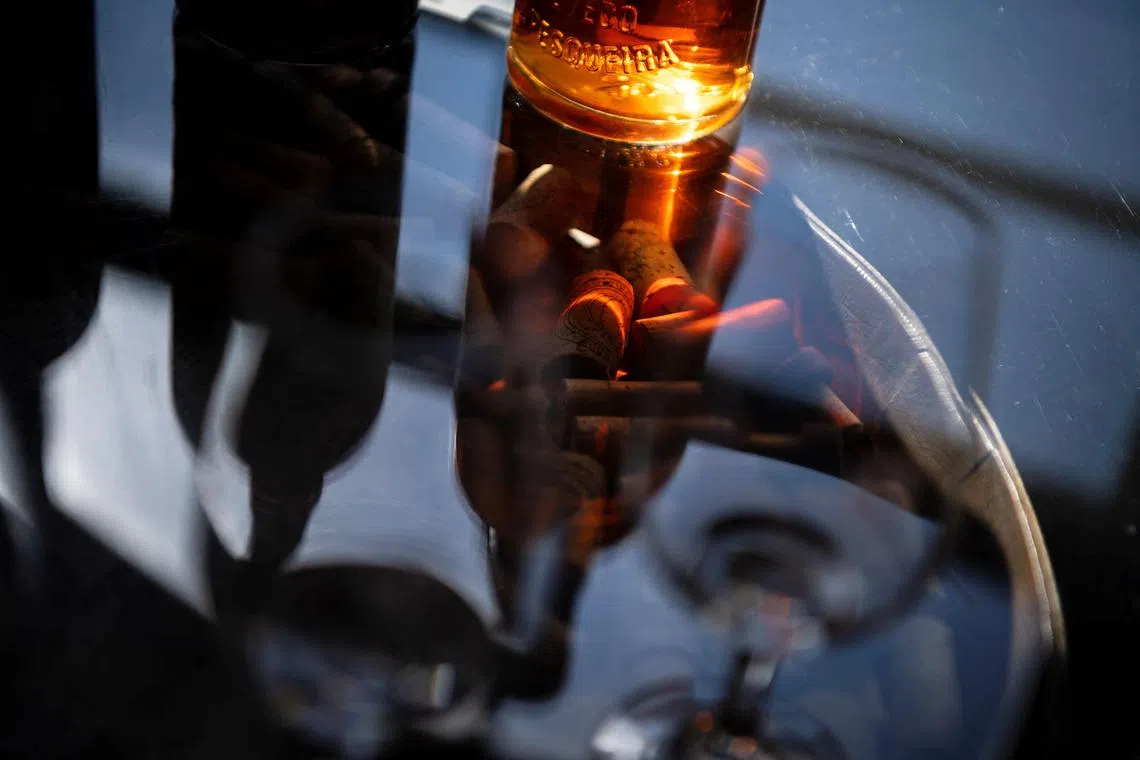In a decade-long caper, criminals cashed in on fake French wine, says Europol
Sign up now: Get ST's newsletters delivered to your inbox

Wine fraud targets a select demographic whose victims are far more likely to find hubris at the standard dining table than sympathy.
PHOTO: AFP
Follow topic:
ROME – Europol, the inter-European police force, announced on Oct 16 that it had dismantled a wide-ranging scheme that manufactured wine in Italy, mislabelled the wine as French, then clandestinely shipped the supposed grand cru vintages to unsuspecting wine merchants around the world. Six people, who were not identified, were arrested.
Wine fraud targets a select demographic, whose victims are far more likely to find hubris at the standard dining table than sympathy. Still, such heists have gained traction over the past two decades, as rare wine prices have exploded.
“We are seeing a lot more collector fraud today than we have ever seen,” said Ms Rebecca Gibb, a wine master and author of Vintage Crime: A Short History Of Wine Fraud.
The trend, she added, began in the 2000s, amid a bull market for fine wines, when “lots of people who knew nothing about wine started to see this as a potential addition to their portfolio”.
The takedown of the recent operation involved a smattering of law enforcement agencies in some of the world’s richest enclaves. Among them were police forces in France, Milan and Geneva.
Investigators from those jurisdictions said they interrupted a sophisticated criminal network that first began producing fraudulent bottles more than a decade ago.
The fake bottles were detected when investigators discovered a latent trace on the back of a forged wine label in 2014 that led them to an individual who had been involved in a similar case.
That initial probe led to the arrest of a Russian national and two Italian winemakers, who were busted for faking grand cru wine domains – a designation for high-end vintages – and mislabelling their Italian wares as French.
The case, though, was far from solved.
The fake bottles began resurfacing in 2019, mostly in Italy and Switzerland, where the fraudulent wines were sold alongside real ones, and were distributed by another offshoot of the original fraud ring from 2014.
In searches across Italy, the authorities seized counterfeit bottles disguised as a variety of grand cru wines, forged stickers and wax products, machinery to fill and recap bottles and more than €100,000 in cash.
Since the coronavirus pandemic elevated the online wine market, industry professionals expect the practice to carry on. NYTIMES

